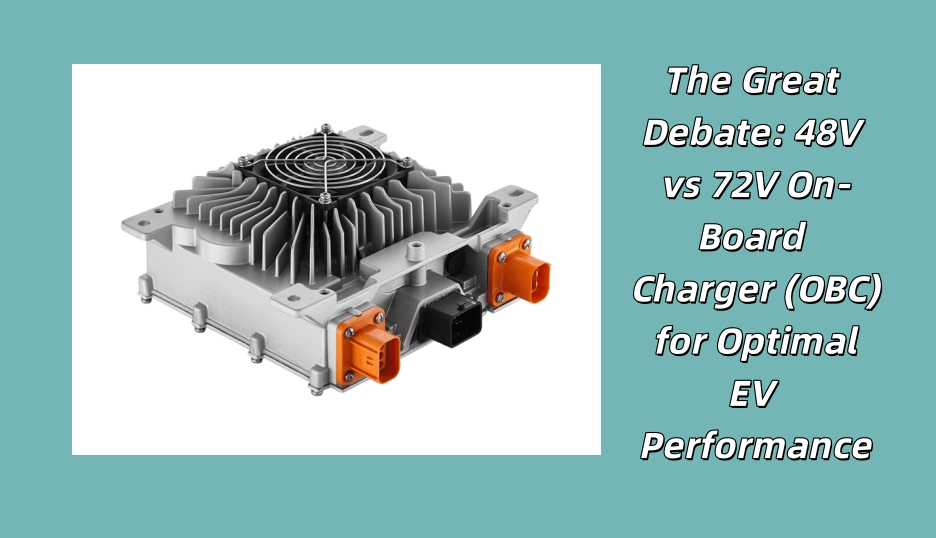Selecting the appropriate on-board charger (OBC) is essential for optimizing your electric vehicle's performance, efficiency, and charging capabilities. Two frequently considered options are 48V and 72V systems, each offering unique benefits. This guide will compare these voltages to assist you in determining the ideal choice for your EV build.
Feature | 48V OBC | 72V OBC |
Voltage Level | Lower (48V) | Higher (72V) |
Power Efficiency | Good for light EVs | Better for high-performance EVs |
Charging Speed | Slower (depends on current) | Faster (higher voltage = less current needed) |
Cost | More affordable | More expensive (due to higher-rated components) |
Battery Compatibility | Common in small EVs, golf carts, low-speed vehicles | Used in larger EVs, e-bikes, performance conversions |
Heat Generation | Lower heat due to lower voltage | More heat, requiring better cooling |
Wiring & Safety | Thicker cables are needed for high current | Thinner cables (lower current for the same power) |
A 48V On-Board Charger (OBC) is ideal for small electric vehicles such as neighborhood electric vehicles, golf carts, e-bikes, scooters, and utility vehicles. It is also well-suited for budget-friendly and lightweight applications. The primary advantages include lower costs for both chargers and batteries, easier availability of compatible components, and enhanced safety during DIY installations due to reduced electrical risks. However, this system tends to charge more slowly when used with larger battery packs and requires higher current for equivalent power output—resulting in the need for thicker, heavier wiring.
A 72V On-Board Charger (OBC) is better matched to high-performance applications like converted electric cars and electric motorcycles, especially where faster charging and extended driving range are important. Its higher voltage enables more efficient energy transfer, reduces charging time, and supports larger battery packs. Additional benefits include improved overall efficiency in high-power settings and the possibility of using lighter wiring thanks to lower current flow. On the downside, a 72V system typically involves higher costs for components, demands more advanced cooling and battery management solutions, and isn’t as commonly supported in entry-level electric vehicles.

● Opt for a 48V System If
A 48V setup is the best choice if you are constructing a low-cost or lightweight electric vehicle—such as a golf cart, neighborhood commuter, or compact utility vehicle—and value affordability and ease of implementation over high speed or power. It is also well-suited for applications where the battery capacity stays below 10 kWh, making it a practical and economical solution for entry-level and limited-range projects.
● Choose a 72V System If
A 72V system becomes advantageous when your project demands faster charging, greater overall efficiency, and higher performance, such as in electric motorcycles, conversion cars, or other high-powered vehicles. This voltage level is particularly beneficial if your vehicle uses a large battery pack—typically 15 kWh or more—to achieve extended driving range and is designed to handle more complex energy management and thermal requirements.
Ultimately, the decision between a 48V and 72V system hinges on your specific project's priorities—be it cost and simplicity or performance and range. By carefully weighing your vehicle's intended use, budget, and technical requirements against the strengths of each platform, you can select the OBC that truly powers your vision, ensuring an optimal balance of efficiency, cost, and capability.
Next:HiTHIUM and IEC Pakistan Forge Landmark Partnership to Distribute 1GWh of Energy Storage Systems
Previous:EVE Showcases Revolutionary Robotic Power Systems at World Robot Conference 2025
Contact Person: Miss. Kiki
| WhatsApp : | +8617763224709 |
|---|---|
| Skype : | +8617763224709 |
| WeChat : | +8617763224709 |
| Email : | kiki@lifepo4-battery.com |